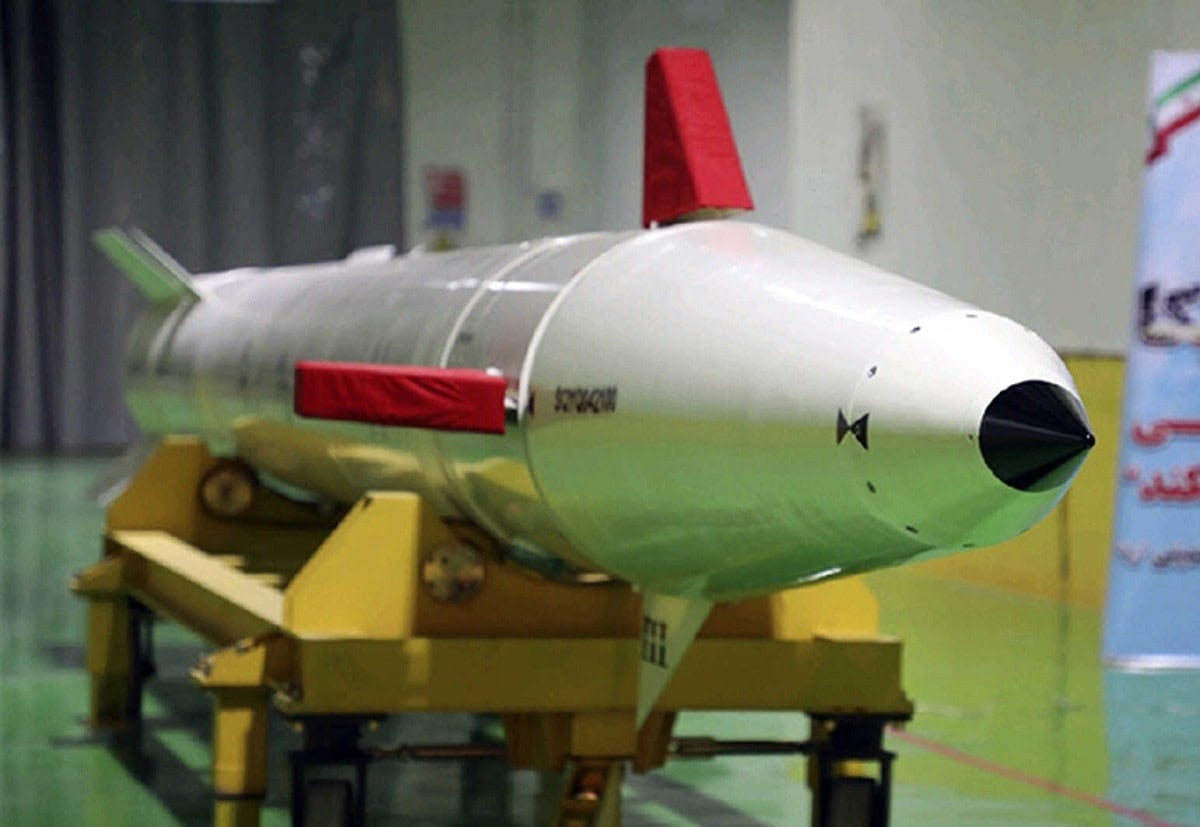Iran unveiled a new hypersonic missile this week, claiming the weapon is capable of traveling at 15 times the speed of sound. Dubbed “Fatah,” the homegrown missile has a purported range of up to 1,400 kilometers (870 miles), a claim Tehran is likely touting to heighten Israel and the West’s concerns over the country’s ballistic missile arsenal.
Iranian President Ebrahim Rahisi joined other commanders within the Islamic Revolutionary Guards Corps (IRGC) to officially debut the Fattah, stating that “Today we feel that the deterrent power has been formed, this power is an anchor of lasting security and peace for the regional countries.”
According to the state-affiliated IRNA news agency, the head of the IRGC’s aerospace program Gen. Amir Ali Hajizadeh added that the new weapon would stimulate the next generation of missiles in the country.
Hypersonic weapons generally refer to weapons that can travel at greater than five times the speed of sound (Mach 5.0). Iran claims its domestically produced Fattah ballistic missile can travel at speeds of up to Mach 15. Hajizadeh also touted that the new weapon can “bypass the most advanced anti-ballistic missile systems of the United States and the Zionist regime, including Israel’s Iron Dome.” Since hypersonic missiles are fast and often maneuverable, they can pose significant challenges to missile defense systems. This is not the first time Tehran has claimed to produce a homegrown hypersonic weapon. In November, the IRGC’s aerospace program also revealed that it created a weapon of this type. However, Tehran never showcased a physical missile and offered no evidence to support its alleged hypersonic capabilities.
Iran has ramped up its ballistic missile development
Last month, Iran successfully test-launched another ballistic missile. The Khoramshahr-4 weapon was debuted just days following an announcement by the Israeli Defense Force’s (IDF) Chief of Staff, who warned that war with Iran could be looming due to the regime’s nuclear program. Tehran similarly aligned the Khoramshahr-4 missile with a direct threat to the Jewish state, using a miniature example of the Dome of the Rock on the Al-Aqsa Mosque in Jerusalem to illustrate the missile launch.
Jane’s Defense detailed the reported capabilities and design of the Khoramshahr-4: “The Iranian media reported that the new variant has a more advanced engine that uses hypergolic fuel, giving it a range of 2,000 km with a 1,500 kg warhead. Unlike other types of fuel/oxidiser combinations, the new propellant can be kept in tanks for years, shortening the preparation time for a launch to 12 minutes, making it a tactical weapon, it was claimed.”
The current status of Iran’s nuclear negotiations
After more than a year and a half, negotiations with Iran surrounding the potential revival of the 2015 Joint Comprehensive Plan of Action (JCPOA) dissolved when Tehran rejected the latest proposal in August. According to the United Nations, Iran is already producing uranium enriched up to 60 percent, in addition to stockpiling small amounts of near-weapons-grade material. European countries have also expressed concerns over Iran’s nuclear ambitions and have pressed the Biden administration to reignite negotiations with Tehran.
The nationwide protests that swept Iran last year have not fully dissipated and more women are defying the regime’s mandatory headscarf policy. In addition to these protests that have shaken the country to its core, Iran is also struggling economically amidst the nuclear standoff with the West. Iran is perhaps attempting to distract from its domestic woes by showcasing newer and more advanced weapons like the Fattah and Khoramshahr-4.
Maya Carlin, a Senior Editor for 19FortyFive, is an analyst with the Center for Security Policy and a former Anna Sobol Levy Fellow at IDC Herzliya in Israel. She has by-lines in many publications, including The National Interest, Jerusalem Post, and Times of Israel. You can follow her on Twitter: @MayaCarlin.
From 19FortyFive
Ukraine Footage Shows U.S. M982 ‘Excalibur’ Cut Through Russian Artillery
How To Sink A $3 Billion Dollar Submarine: Leave A Hatch Open
Smashed To Pieces: Video Shows Ukraine Hitting Russian Air Defenses

